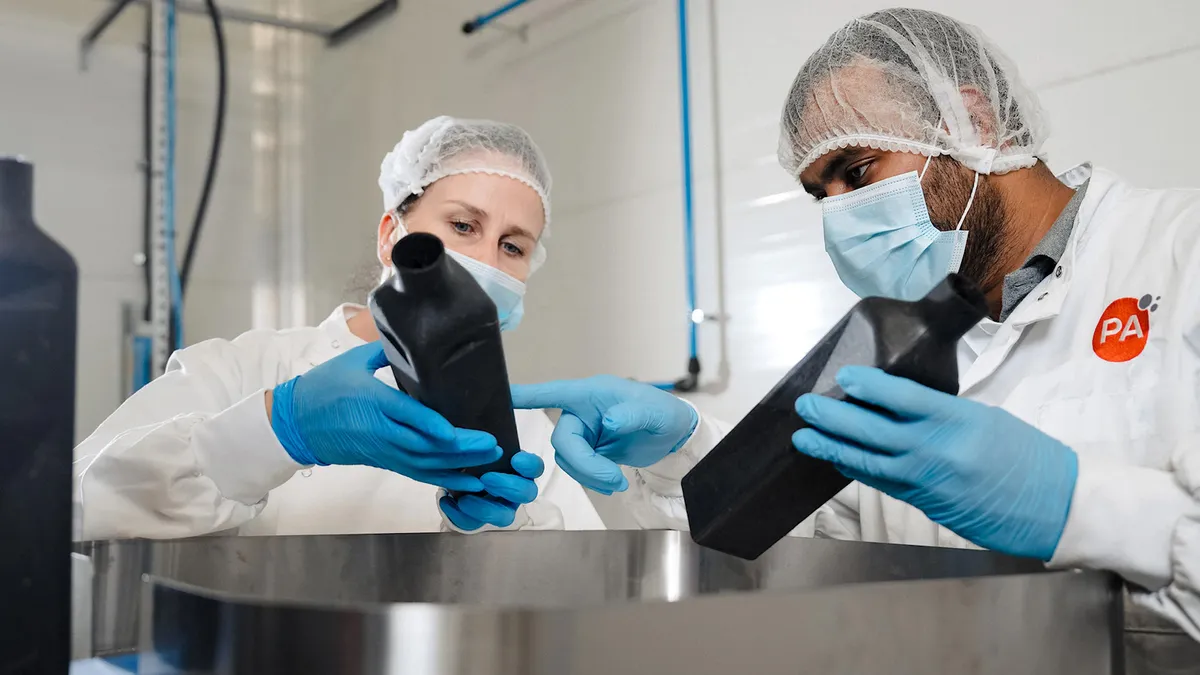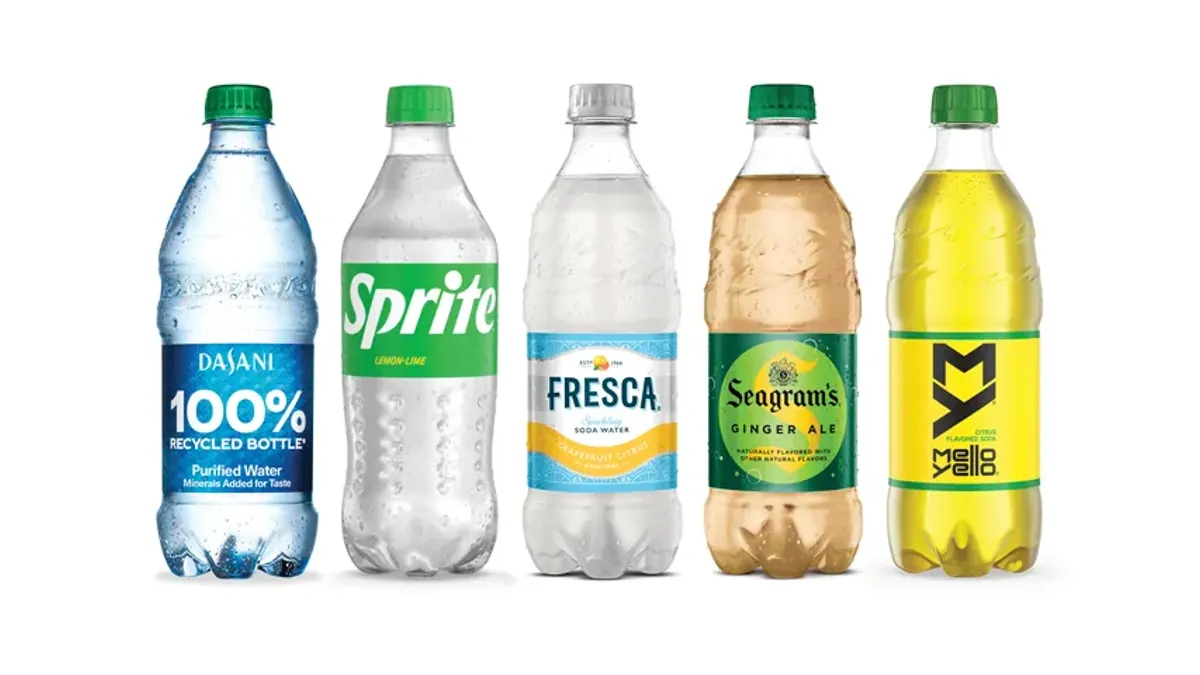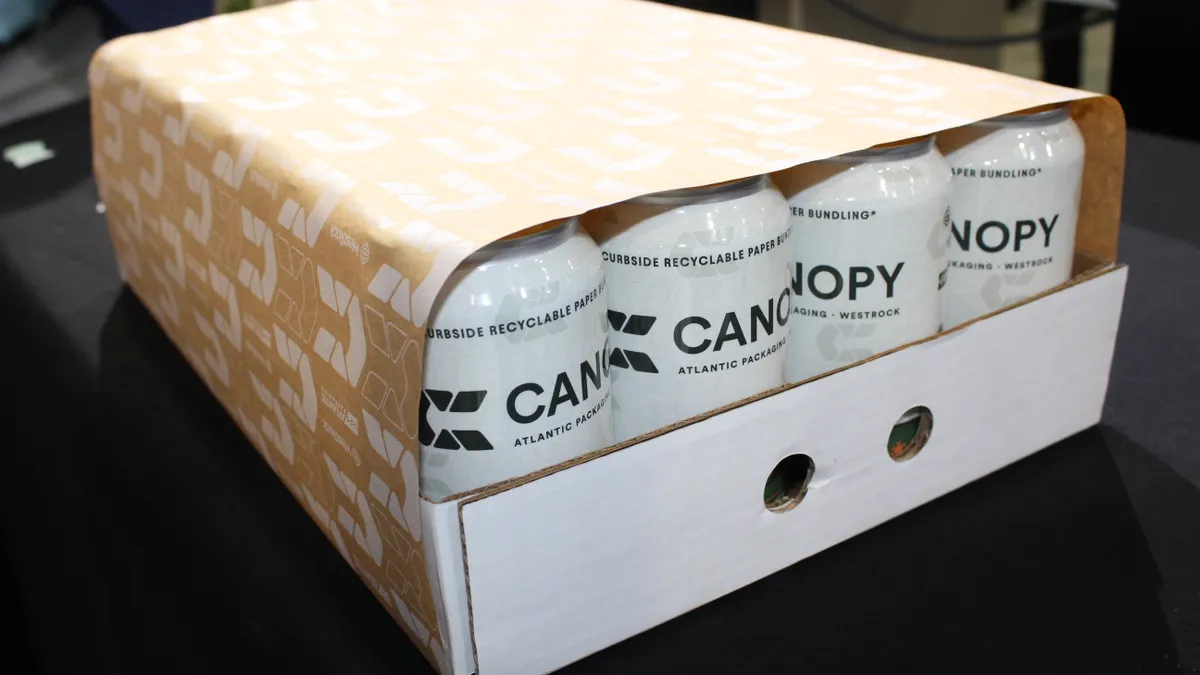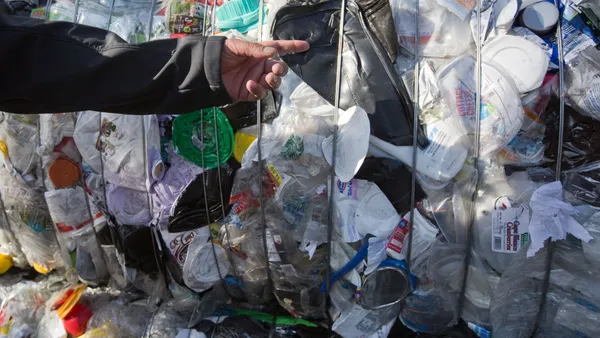Brands continue to pursue sustainability commitments, including to boost packaging recyclability and the use of postconsumer recycled content. In many cases, the actions come in anticipation of legislation that would mandate such features. But keeping ahead of, and complying with, regulations is creating headaches for packaging companies, according to speakers at Pack Expo from Sept. 11-13. Some want policymakers to slow down in developing this legislation.
While certain movements, such as sustainability, garnered widespread support among Pack Expo attendees, sustainability-driven regulation prompted debate. Discussions among attendees and speakers at educational sessions covered an array of areas for potential regulation, such as chemical recycling, but extended producer responsibility and bans on certain materials — especially plastics — dominated conversations.
Regarding plastic bans, “I think we know in the industry that that’s not what we want to do. Plastic plays a really important role, particularly when you’re talking about food and beverage [or] talking about medical and health and beauty,” said Alison Keane, president and CEO at the Flexible Packaging Association.
At the same time, she said the organization’s members don’t want to contribute to plastic waste in the environment. FPA tries to help its members keep products fresh and sterile with packaging, “but also try to solve that end-of-life circularity and not have any trade-offs, if that’s even possible,” Keane said.
She said that policy is driving innovation, but that’s not how the equation should work, and policymakers aren’t considering the whole picture when devising legislation.
“We should be driving packaging innovation based on the product ... protecting the product first and foremost,” Keane said. “[Policymakers] are not looking at the life cycle, they’re not looking at protecting the products. They look at one thing and one thing only right now, and that is: How much waste, packaging waste specifically, is in our environment, in our landfills, in the garbage.”
California is among the few states that already have adopted packaging laws that could create difficulties for packaging companies. “Other states look to them and adopt similar proposals,” which could spell further challenges, Keane said.
California passed multiple packaging-related laws in the last few years, including SB 54, which requires single-use packaging to be recyclable or compostable by 2032, and SB 343, which limits use of the common “chasing arrows” symbol on packaging.
California is among four states — the others are Colorado, Maine and Oregon — that have passed EPR for packaging laws and are in the system implementation phase. While “well thought out” EPR could achieve policy makers’ intended benefits, sources said, the piecemeal nature of every state passing different mandates spells trouble for packaging companies.
“Are you going to label it to be recyclable in California? Are you going to label it differently in Maine because they don’t take the same things in the recycling system? What about compostability?” Keane said. “We cannot label separately for different states.”
Speakers at a separate educational session focused on SB 343’s labeling requirements also addressed the hurdles.
“What California has put into law ... will be in direct conflict with 30-plus other states that have other requirements,” such as the chasing arrows in combination with resin identification codes, said Dan Felton, executive director at Ameripen. “That’s going to create some conflict” for companies that put out packaging across the country.
He echoed Keane’s concerns about fees that producers would have to pay under California’s system, saying that state’s program “isn’t EPR. Well, it is EPR, but it’s ‘EPR plus’: plus fees.” Regarding Maine’s EPR legislation, for example, in which producers would have to pay a fee, Keane said: “That’s a tax, a straight up tax.”
Some speakers recognized that the chasing arrows symbol has evolved into something for which it was not initially designed. For example, the resin identification codes were supposed to communicate to collected material sorters, but they weren’t intended to serve as a consumer education tool signaling that a marked item is recyclable. So while speakers agreed law modernization updates are appropriate, each state addressing the chasing arrows and other messaging separately complicates packaging manufacturing.
“The issue for us is less the fact that they are now requiring that people actually use the standard as it’s intended. ... but rather they did it in a way that is causing brands and their processor partners to really have to split their [manufacturing] lines in half,” said Patrick Krieger, vice president of sustainability at the Plastics Industry Association. “It’s a very unfortunate and uncomfortable position for people to be in: Which laws do you not want to follow?”
Ultimately he said that “extended producer responsibility is a good tool when coupled with other policy, like investments in infrastructure,” but the policies have to be well thought out and constructed.
Third-party certification, such as through How2Recycle or the Biodegradable Products Institute, is a way for brands to be consumer-friendly in labeling while ensuring regulatory compliance via an independent organization, said Patrick Keenan, a packaging engineer focused on sustainability at General Mills.
“Really, we’re not experts in the entire recycling conversation. We’re experts in how to make the products consumers want,” he said. Even if SB 343 prompts changes to the How2Recycle program, “we still think it will be a label that’s valuable to us as a brand,” he said, adding, “We need to be really transparent with the consumer and when something isn’t recyclable we need to also tell them that. ... We need to not shy away from not labeling when something’s not recyclable.”
All the speakers noted the widespread desire for a national standard governing packaging messaging and sustainability requirements. But Keane suggested that “one of the reasons you’re seeing so much state activity about this is because there is federal inaction.”
Felton referenced the Federal Trade Commission’s Green Guides, the more than 30-years-old guidance for environmental marketing claims, which are currently under review for potential updates. Although many states base their own legislation on portions of the Green Guides, the federal document itself is not a law. Felton also offered the reminder that environmental claims aren’t just about recyclability, but compostability and reusability as well.
In the end, through sometimes heated voicing of concerns, speakers generally agreed that packaging companies will be able to navigate through the upcoming regulations, but it will take some work.
“We do have the innovations and we do have the solutions” along with recycling and converting partners, Keane said. “We need to solve this, and we all need to do it together.”




















